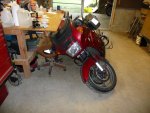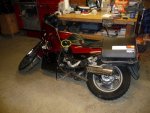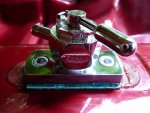Willy,
Air will compress, the pressure will keep increasing but it will keep compressing. Likewise, air will leak past rings,(they do not provide a perfect seal), and valve seats much faster than a liquid. Therefore, it will take more actual liquid (fuel or antifreeze in the case of a head gasket failure), than combustion chamber volume to cause a hydrolock event.
Matt
Air will compress, the pressure will keep increasing but it will keep compressing. Likewise, air will leak past rings,(they do not provide a perfect seal), and valve seats much faster than a liquid. Therefore, it will take more actual liquid (fuel or antifreeze in the case of a head gasket failure), than combustion chamber volume to cause a hydrolock event.
Matt







